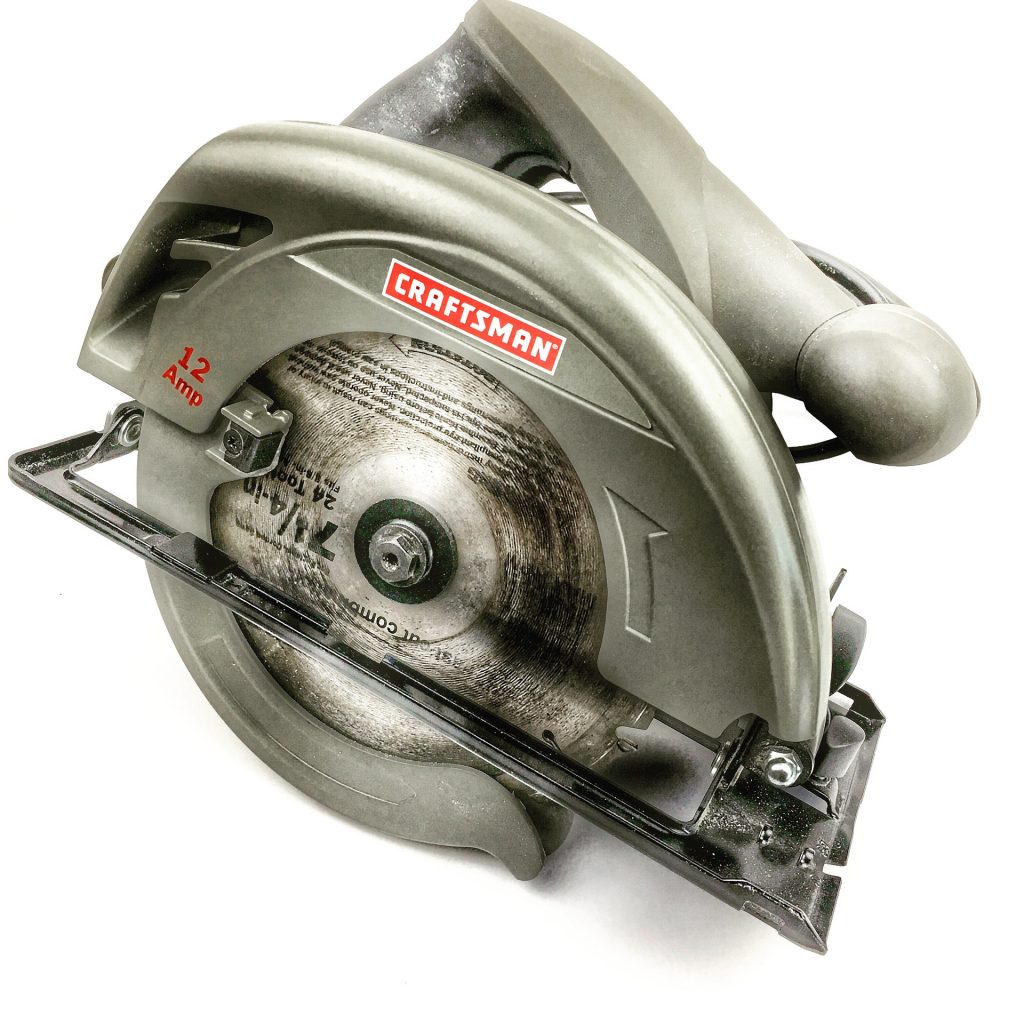Circular saws are extremely versatile tools that can be used for a number of jobs in woodworking.
You can use them for cross-cutting, ripping, and also plunge-cutting many different types of materials.
However, in order to make circular saws run properly, you also need to know many watts are needed to power them effectively.
Quick Summary
In this post, we will discuss how many watts you need to run a typical circular saw with efficiency.
We will also discuss the different factors of a circular saw you can assess in order to determine how much power it needs.
So without further ado, let’s get into it.
What Factors Affect the Number of Watts My Circular Saw Needs to Run Properly?
To correctly identify how many watts your circular saw needs to run effectively, you can look towards different factors of it.
These factors will help you assess the operational power of the circular saw and thus, the number of watts it needs to run.
These factors are:
Wattage
The wattage naturally provides you with the most accurate measurement of how much power a circular saw needs to run.
According to Generator Source, a typical circular saw requires 2400 watts to start up. This is referred to as the starting wattage.
After that, it requires 1200 watts to run properly. This is referred to as the running wattage.
The size of the circular saw also plays a significant factor in how many watts it needs.
Some estimates from the University of Texas’ Mechanical Engineering department have suggested that a 7.5-inch circular saw requires only 900 watts during operation.
Usually, when manufacturers provide the number of watts that a certain circular saw of theirs needs to run, they mention the running wattage.
For example, the Festool TS 55 EQ Plunge-Cut Saw requires 1,200 watts. This is fairly surprising given that its saw blade is fairly small at only 6.25 inches in diameter.
This just goes to show that there’s really no clear-cut science to all this. While we understand that smaller circular saw blades typically need lower power, you will still see products in the market that are small but still need a high amount of power.
Another example of this phenomenon is the Hitachi C7YAH 7 1/4-inch Dust Reducing Circular Saw.
It features a blade that is 7.5 inches in diameter but requires a whopping 1680 watts of power in order to run properly.
Amperage
The amperage (or amps) that a circular saw uses typically refers to the amount of electricity that its motor draws in during operation.
For most circular saws, the amperage usually ranges between 10 and 15 amps.
You must have seen the motors of different circular saws being advertised as “powerful 15-amp motors”, etc.
That’s exactly what they’re referring to there.
Most circular saws actually use 15 amps not because that’s an extremely powerful amount but rather because that’s the common capacity for most home circuitry.
15 amps correspond to a safe maximum wattage of 1440 watts.
However, as mentioned above, there are certain models of circular saws that use less than 15 amps as well.
Rotations Per Minute (RPM)
As the name suggests, a circular saw does not have its blade cut along a single axis but rather, uses the power provided to it to drive the blade with a circular movement.
Hence, the power provided to such a circular saw gets translated into circular force, more commonly known as torque.
While the amperage of a circular saw tells you how much electricity is being drawn in by the motor, the RPM tells you how much of this power is actually being utilized.
Check out more resources of circlar saw which need different watts to work.
A great example to see this in action is by looking at the differences between worm drive saws and standard direct-drive saws.
Worm drive saws and direct-drive saws typically have the same power requirements for the most part.
However, since they have different designs and blade orientations, worm drive saws typically generate a lot more torque compared to direct-drive saws.
However, the RPM of worm drive saws is usually lower than that of direct-drive saws.
Worm drive saws typically run at 4500 RPM whereas direct-drive saws usually run at 6000 RPM.
However, since the latter are smaller, they generate less torque compared to the former.
There are a number of factors you must take into account to ensure you buy the right circular saw for your specific needs. Find out more about them HERE.
Frequently Asked Questions (FAQs)

Do Circular Saws Require an Uninterrupted Supply of Power?
Yes, of course. If you have a corded circular saw, then it will need an uninterrupted supply of power in order to run properly.
If this is something that you cannot achieve at your workspace, then we highly recommend that you go for a cordless battery-operated circular saw rather than a corded saw.
It will be much easier for you to operate in a space where an uninterrupted supply of power may not be available.
How can I Keep the Power Consumption of My Circular Saw to a Minimum?
As you may have seen above, the starting wattage of a circular saw is much higher than the running wattage.
Hence, circular saws require a lot more power to start spinning than to keep spinning. Keeping this information in mind, you can reduce the power consumption by not switching it on and off over and over again between tasks.
Does Power Loss Occur when Operating a Circular Saw?
Of course, a circular has power loss just like pretty much any other electrical piece of equipment.
To keep the power loss to a minimum, we recommend that you regularly clean and maintain your circular saw.
In addition to that, it’s also a good idea to keep its moving parts well-lubricated so that very little of the power is lost as heat due to friction with dried-up residue, etc.
Wrapping Things Up…
We hope you have a better understanding of how many watts a circular saw needs in order to operate properly.
Naturally, every circular saw is different and it’s a good idea to assess the many factors that affect the number of watts it needs to run to get a proper estimate.
You can check out our website to know more about how circular saw works.
If you have any further questions, please reach out to us in the comments below.

